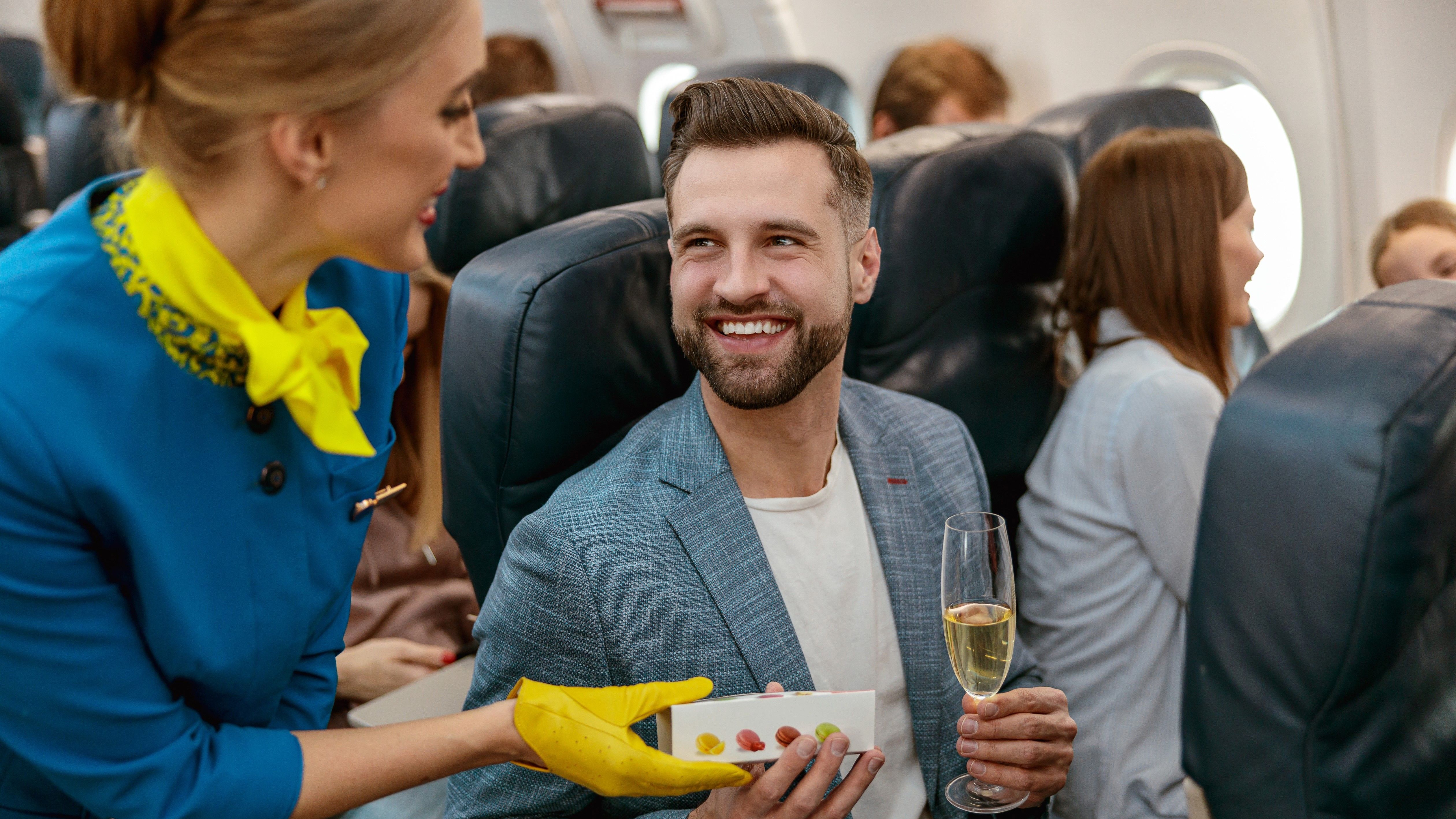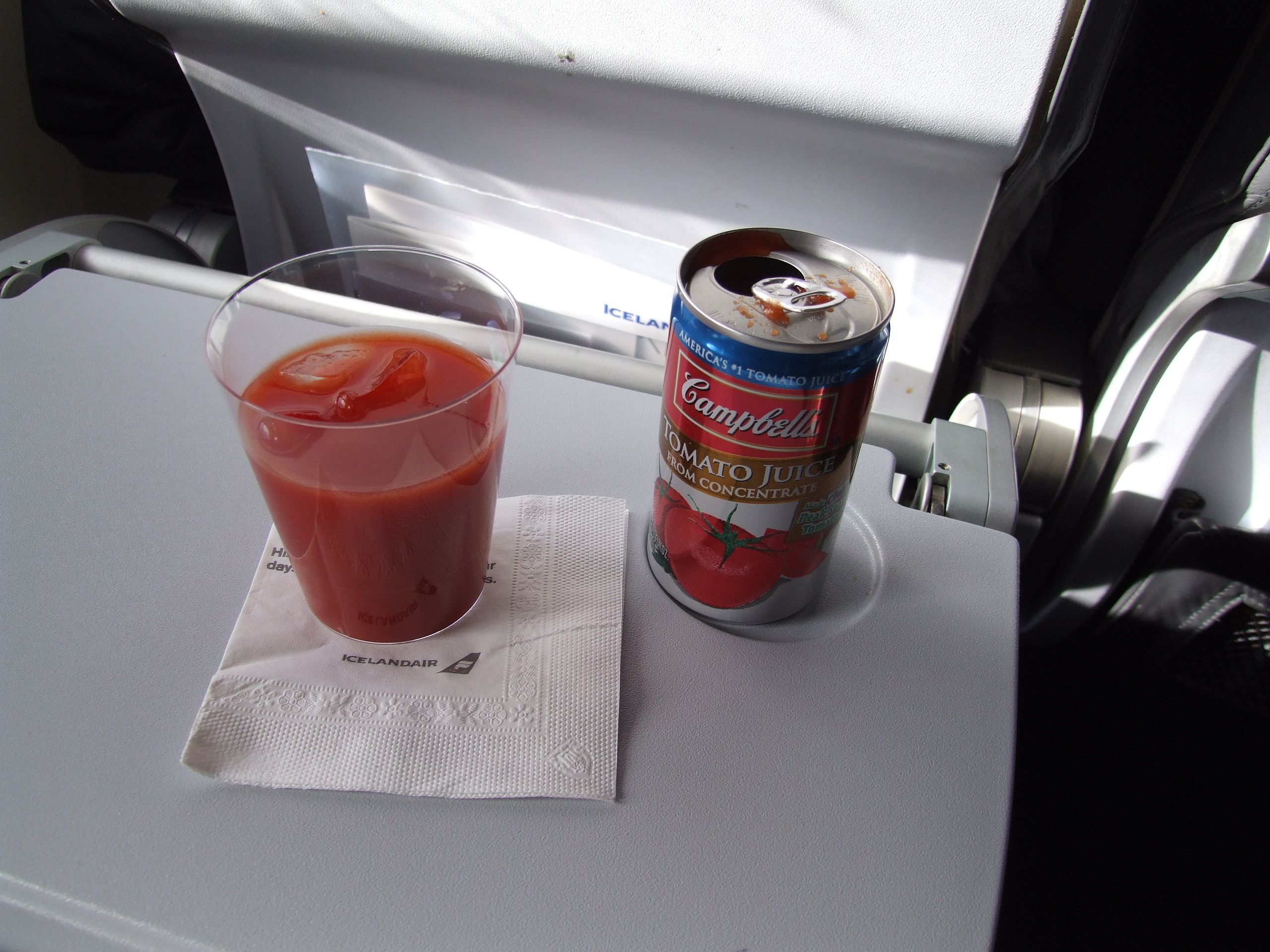Summary
- High altitude and pressurized cabins alter taste buds, causing airlines to hire specialists to create menus that taste good at 35,000 feet.
- Southwest Airlines became known for offering peanuts to its passengers but stopped serving them in 2018 due to peanut allergies.
- Tomato juice is a popular choice on flights due to its umami flavor and perception as a healthier option. United Airlines faced backlash when it removed tomato juice from its options.
Today, we will look at five food and drink items synonymous with modern commercial airlines. Handley Page Transport was the first airline to serve food on flights. Passengers between London and Paris were offered a selection of sandwiches and fresh fruit.
In 1929, Pan American World Airways (Pan Am) started offering its passengers chewing gum to help them cope with the change in air pressure. As we entered the 1930s, air travel took on a romantic appeal, and airlines began to offer passengers hot food.
High altitude and pressurized cabins alter your taste buds
Following World War Two, aircraft with pressurized cabins were introduced, as were more meal options served by what we refer to as flight attendants today. When jets were introduced in the 1960s, flying at higher altitudes became an issue as people's taste buds changed.
To help combat this, airlines hired specialists to create menus that taste good at 35,000 feet. In the next few decades, airlines began offering foods representing their home counties. Since then, the inflight food business has grown to become a multi-billion dollar business.
1 Nuts for peanuts
When Texas-based Southwest Airlines debuted its low-cost model for flying in the early 1970s, it became known for offering all its passengers a bag of peanuts. The airline's advertising agency, GSD&M, launched a successful campaign telling people that Southwest Airlines fares were so low that they could fly for peanuts.
For 35 years, flyers associated Southwest Airlines with peanuts until, due to concerns over peanut allergies, the airline stopped serving the nuts on its flights in 2018.
2 There is something about Biscoff
If there was ever a cookie associated with air travel, it has to be the Lotus brand Biscoff. Invented by a baker in Lembeke, Belgium, in 1932, the Biscoff cookie contains three simple ingredients: flour, candy syrup, and cinnamon. Atlanta-based Delta Air Lines discovered the Belgian cookie in the 1980s and decided it was the perfect match for a cup of coffee.
Back then, there was nothing similar on the American market, and it soon became a big hit with Delta passengers. The cookie proved so popular that Delta approached the Belgium bakery factory in North Carolina and asked it to bake Biscoff cookies with a Delta Air Lines logo.
Other US carriers soon copied Delta and began serving Biscoff cookies on their flights. In 2020, United Airlines replaced its Biscoff cookies with Nabisco Oreo thins. The backlash from passengers was such that almost immediately, the Biscoff was reintroduced on United Flights.
3 Champagne Supernova
No first or business class passenger would be happy if they did not receive their pre-takeoff glass of Champagne. Depending on their policy, some airlines do not serve Champagne before takeoff but offer it to passengers when the plane is airborne and the fasten seat belt sign has been turned off.
The quality of the Champagne being served varies from airline to airline. At the same time, you might think that Air France would offer its passengers the best Champagne; its business class passengers are offered Taittinger Brut Réserve, Deutz Brut Classic, or Charles Heidsieck Brut Réserve. Beating Air France for Champagne is Qatar Airways, which serves its business class passengers a $160 a bottle glass of Charles Heidsieck Rose Millsesime.
All the Gulf carriers and Asian full-service airlines serve French Champagne in business class. To save money following the COVID-19 pandemic, American Airlines began serving its business class passengers Italian sparkling wine. Retailing for half the price of a comparable Champagne, Ferrari Brut Trento DOC is a very decent wine made from Chardonnay grapes produced in the same method as Champagne.
4 The red stuff
The popularity of tomato juice on flights can be traced back to 1936 when famous female aviator Amelia Earhart described it as her drink of choice when flying. As we mentioned earlier, when flying at 35,000 feet, your taste buds are not the same as they are when on terra firma. Despite the altitude, the umami flavor of tomato juice remains the same.
German national flag carrier noticed that tomato juice was the most popular beverage on its flights, so it decided to find out why. When given a choice of beverage, tomato juice is seen as a healthier option thanks to its antioxidants, vitamin C, and electrolytes. United Airlines dropped tomato juice from its list of options in 2018, and the backlash was so severe that it reintroduced the popular drink almost immediately.
5 A culinary classic
While you might be surprised to see chicken satay on a list of modern airline favorite foods and drinks, some people will fly on Singapore Airlines because of it. Consistently voted one of the world's best airlines, Singapore Airlines' iconic chicken satay skewers with spicy peanut sauce is the only dish that remains on its menu year-round.
The secret recipe for the peanut sauce can only be made in Singapore, which means for flights that do not originate from Changi Airport (SIN), the chicken satay must be transported using dry ice. Malaysia Airlines is another carrier that has the offering as a staple on its long-haul service.



